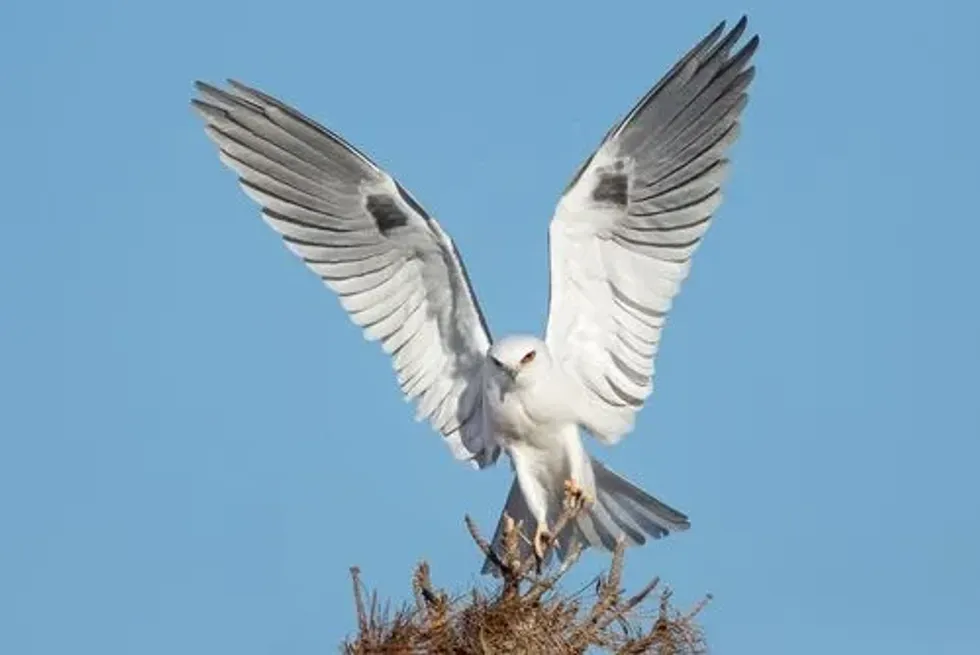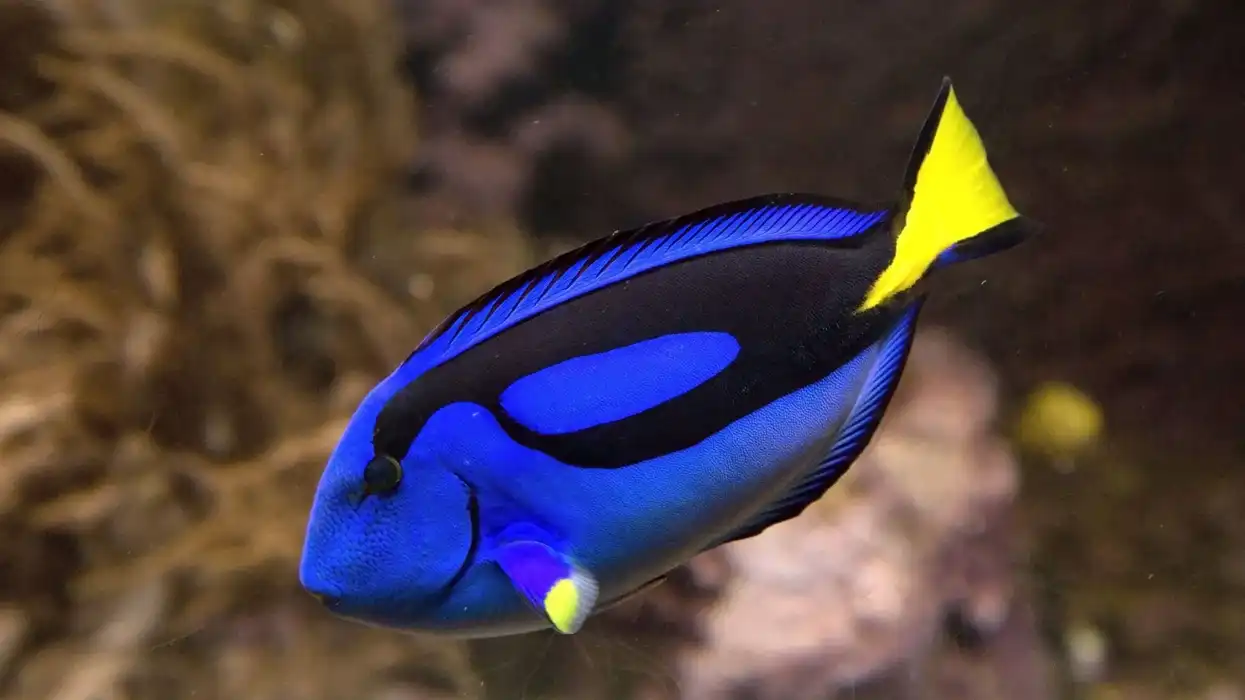A top predator, the white hawk (Pseudastur albicollis), is not only a magnificent bird to look at but a fearsome one to watch in action.
Found in only a few places in the world, this carnivorous bird is divided into four subspecies based on the geographic locations in which they are usually found. The white hawk, to date, remains an elusive species and there is still a lot about its behavior in the wild, and aspects of its life that need to be uncovered.
Along with being elusive, the predator is also quite cunning with its hunting techniques.
Read on to find out more about interesting white-tailed hawk facts. After reading these fascinating black and white hawk-eagle facts, do check our other articles on the sea eagle and Cooper's hawk.
White Hawk Interesting Facts
What type of animal is a White Hawk?
The white-tailed hawk (Pseudastur albicollis), or white hawk, is a predatory bird that belongs to the biological family of Accipitridae and is scientifically referred to as Pseudastur albicollis.
What class of animal does a White Hawk belong to?
The white hawk belongs to the class of Aves, or birds, since they are not only warm-blooded but also are vertebrate creatures and have feathers. They also lay eggs in order to procreate.
How many White Hawks are there in the world?
While there is no official estimate for the global population of white hawks, some figures suggest their population at around 45,000 spread across their known territories. However, these birds are fairly rare and their population is present in only a few regions of the world.
Despite this, these birds are not classified as an endangered species. The range of white hawk in Central and South America expands across the entire Amazon basin.
Where does a White Hawk live?
White hawks are known to live in lowland forests where there is extensive tree coverage. This bird of prey may ascend to higher altitudes while hunting, but as a general rule, they make their homes in plain, level forests that are heavily wooded across Central, South, and North America.
What is a White Hawk's habitat?
White-tailed hawks are known to live in lowland forests where there is extensive tree coverage. They may ascend to higher altitudes while hunting for prey, but as a general rule, they make their homes in plain, level forests that are heavily wooded.
Therefore, this species is also referred to as a neotropical species. The white hawk also needs animals like mice and snakes to prey on, which is why these animals are present in the bird’s general habitat.
Their technique of hunting involves waiting on high ground. This is another reason why white hawks are best suited to a habitat with tall trees and plenty of biodiversities in terms of animals.
Who do White Hawks live with?
White hawks are mostly solitary birds, only coming together with one another for breeding purposes and until their chicks can learn to fend for themselves and survive in the wild.
It is rare but possible for white hawks to make groups of twos and threes while soaring about in the skies. The white hawk has a very specific habitat that it needs, because of this it generally does not approach areas that are heavily populated by human beings.
These hawks hunt during the day wherein they hunt for small animals and rodents.
How long does a White Hawk live?
A white hawk has a life expectancy of about 20 years of age. These American birds can be often seen soaring the skies all by themselves or sometimes in a pair. It is also quite common to find them perched discreetly on a tree branch.
How do they reproduce?
Hawks are famously monogamous when it comes to choosing a partner for reproductive purposes. Further, white hawks mate with each other for life.
These pairs come together to procreate and nest together. Female white hawks only lay two or three eggs at a time and usually only once a year.
Having laid the egg, which is a dark blue and white-colored egg, the female takes over any incubation routines and necessities as required in the nest. This incubation lasts for about 35 days, following which the egg hatches and the young ones are born. The young bird grows extremely quickly in the nest.
When the young chick reaches the age of 65-88 days, it fledges. After fledging, the young bird is expelled by the parents to fend for itself in the wild.
What is their conservation status?
Even though there are only a few tens of thousands of white hawks all over the world, owing to the fact that these birds live in the wild in only a few regions that are yet untouched by man, these American birds are classified as of Least Concern, in terms of their conservation status.
However, the biggest threat to white hawks is the loss of their habitat due to deforestation.
Experts predict that in the coming years, humanity continues to wipe out forests at the same rate as today, the numbers of the white hawk population will witness a sharp drop making it an endangered species requiring concerted conservation efforts.
White Hawk Fun Facts
What do White Hawks look like?

White hawks are essentially white in color, with streaks of black on the tips of their wings. The color transforms into a white that is streaked with black spots on the underside of the white hawk's wings.
On the tail, these birds usually have a black and white pattern where the whitetail ends with a black band around it. The legs of a white hawk are usually yellow. White hawks are big birds with massive wingspans.
This species has large wings because they are essentially soaring birds like kites or eagles. Female White Hawks are usually bigger and heavier than males.
How cute are they?
The white hawk is a wild species of bird. Moreover, these large birds are carnivorous reptile hunting predators.
The white hawk is by no means cute. Nonetheless, an apt way to describe this species is majestic. Usually, the white feathers of an adult white hawk remain spotless, and with the contrast of black on white, these birds, whether you see them perched on a tree or soaring about in the sky, will always look majestic.
How do they communicate?
The white hawk is an elusive bird, which is why not much information exists that could tell us properly how exactly the species communicate with each other. However, it is known that the white hawk does communicate using its own cry which has been described by experts as a plaintive kerwee.
How big is a White Hawk?
A white hawk adult is about 18-22 in with a wingspan of 46-56 in. This species has a large wingspan because they are essentially soaring birds like kites or eagles.
Female white hawks are usually bigger and heavier than the males, weighing about 1.85 lb as compared to male white hawks, which weigh 1.43 lb. This makes the white hawk a little bigger than a toy dog breed such as chihuahuas or Lhasa-apsos.
How fast can a White Hawk fly?
All hawks are famed for their flying and hunting prowess. Being a top predator in its habitat, the white hawk most certainly has the muscle for it.
While hunting, the white hawk can reach speeds of over 150 mph. Even otherwise, white hawks are migratory birds and thus, fly hundreds of miles on a daily basis during the season of migration.
How much does a White Hawk weigh?
Female white hawks are usually bigger and heavier than the male ones, weighing about 1.85 lb. as compared to male white hawks, which weigh around 1.43 lb.
What are their male and female names of the species?
The male white hawk has been assigned the name tiercel, whereas the female White Hawk is called a hen.
What would you call a baby White Hawk?
A baby white hawk would be referred to as an eyas, a chick, or a juvenile.
What do they eat?
The white hawk is a carnivorous predator whose main diet consists of reptiles of different kinds. These American birds could prey on snakes and lizards.
Sometimes, white hawks will also resort to eating insects, and at other times, these birds of America will prey on smaller mammals such as rabbits and squirrels. The white hawk has also been known to hunt for smaller and weaker birds and some types of amphibians.
Are they dangerous?
Like any other animal, the white hawk is usually only dangerous when provoked or threatened. Otherwise, these birds don’t pay much heed to humans even if around them. However, since these birds are predatorial birds with strong talons and beaks, it is extremely unwise to provoke them.
Would they make a good pet?
No, the white hawk would not make for a good pet. The main reason is that this species is a wild species that thrive in the wild where it can not only hunt for prey but also take advantage of the open skies and soar about.
Another reason is that there has been no record of any domestication activities with the White Hawk, and scientists lack sufficient data about this species’ behavior and habits.
This makes it nearly impossible to know and predict how the bird might respond to being captured or closely approached by humans. In fact, these birds are not even that easy to come across in zoos.
Did you know...
It is illegal to own a white hawk in some countries, such as Mexico.
Their eye colors can vary with a variation in the species’ geography.
Hawks have the ability to expel any feathers or bones that they might have eaten from their mouth by the process of regurgitation.
The Symbolism of the White Hawk
Most cultures regard white as the purest color and associate it with good things. The white hawk, too, is associated with miracles, and it is said that sightings of a white hawk are God’s way of telling you that you are about to witness happiness and purity in the near future.
Why is the White Hawk population declining?
The white hawk population is declining due to rapid urbanization which is taking place at the cost of forests such as the Amazon River basin and other parts of their habitat. The white hawk, being a wild bird, cannot flourish without forests.
Moreover, their reproduction rate is extremely slow, laying only two or three eggs at a time, once or twice a year. Today, the numbers stand at roughly 50,000. However, at the present rate of deforestation and loss of their habitat, that number will witness a sharp decline.
Here at Kidadl, we have carefully created lots of interesting family-friendly animal facts for everyone to discover! Learn more about some other birds including the northern shoveler and the prairie falcon.
You can even occupy yourself at home by drawing one of our White Hawk coloring pages.










